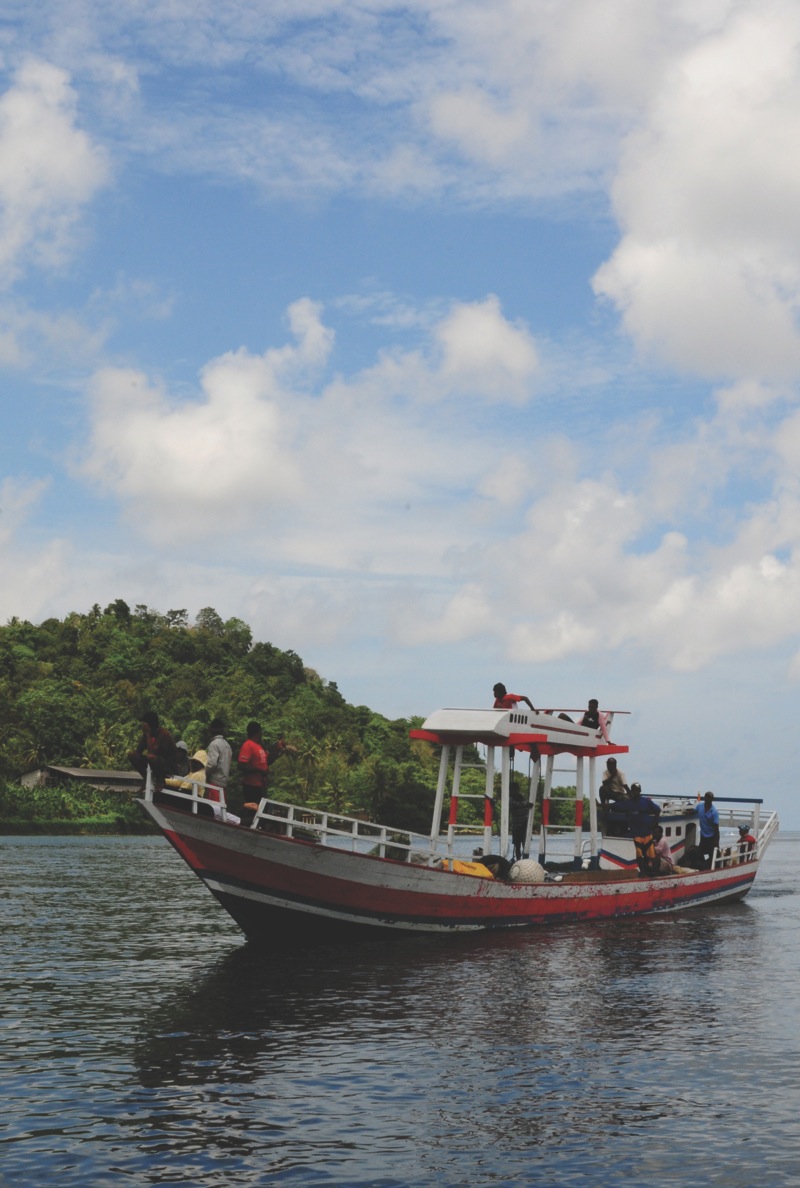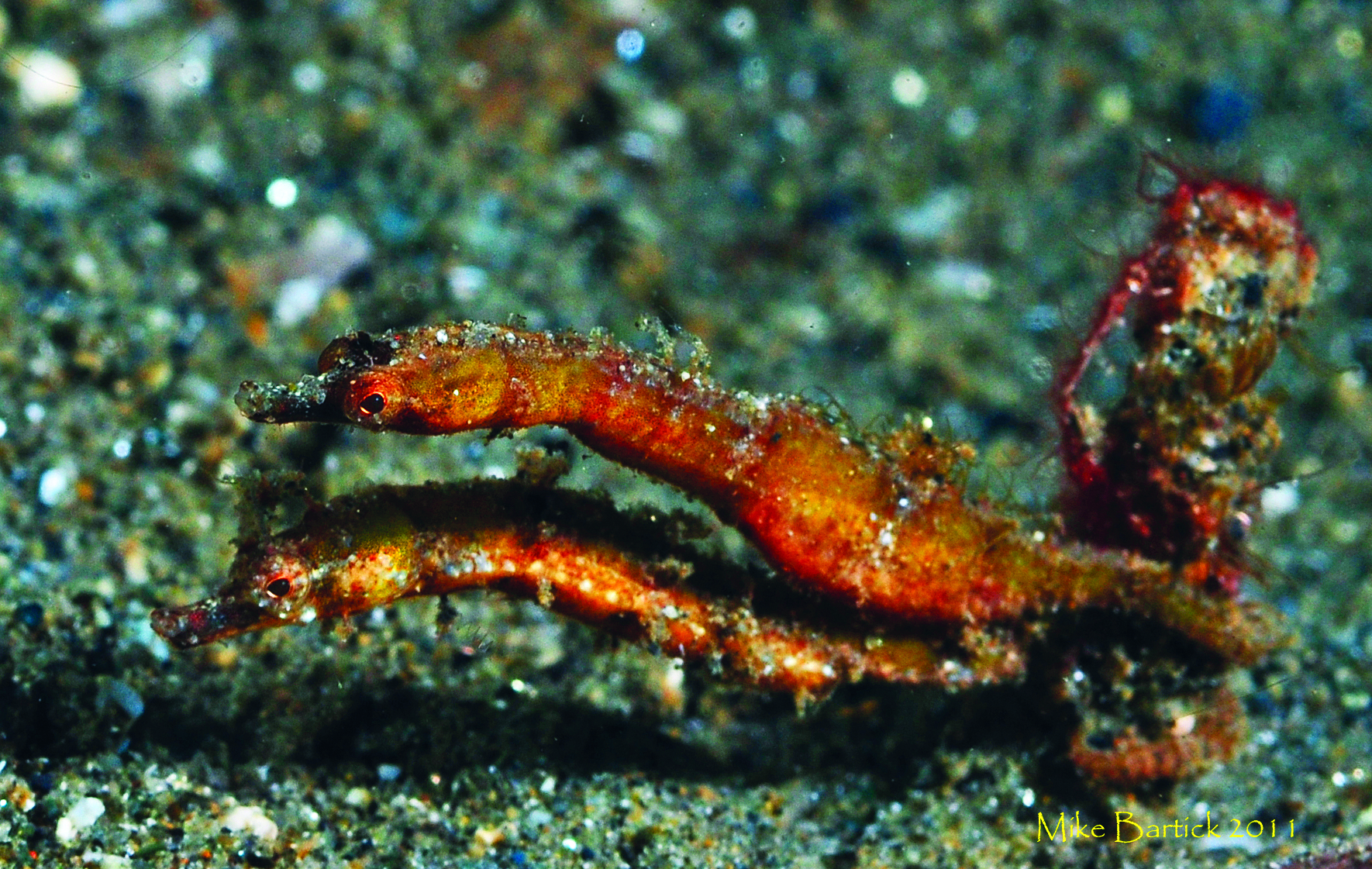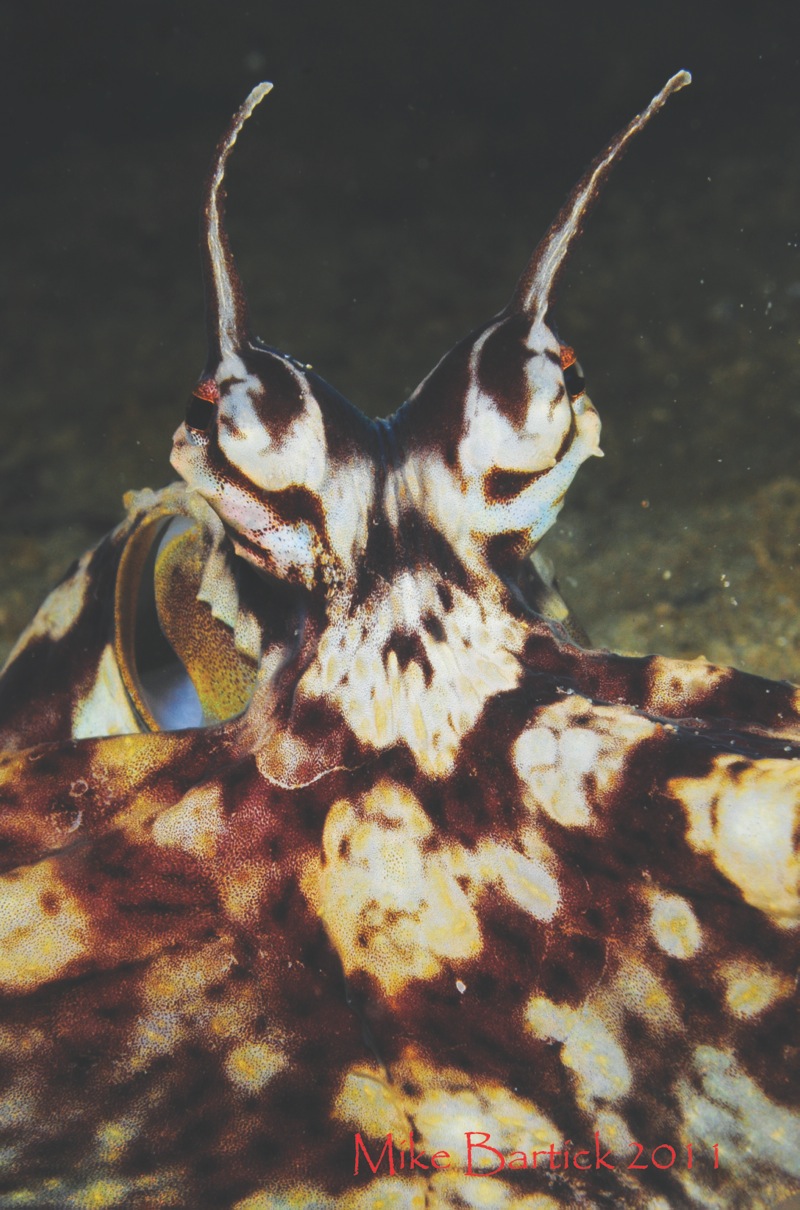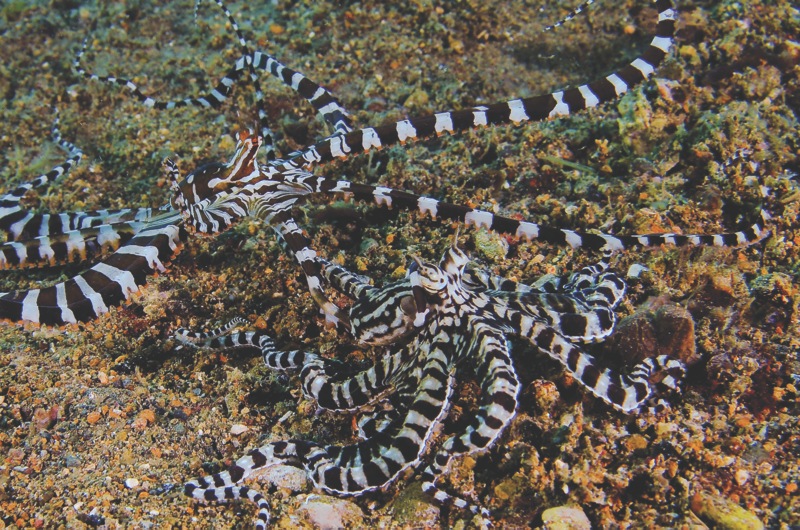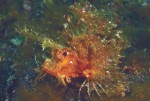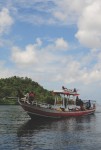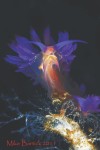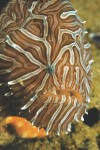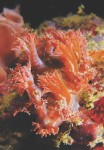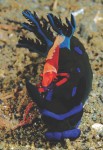Ambon is geographically positioned at the center of Indonesia’s “ring of fire,” between the Ceram and Banda Sea, in what is often called the gateway to Raja Ampat. Many dive trips begin or end in this bay. Ambon’s only land-based dive resort, Maluku Divers, sits on its shores, providing a respite for divers after a long journey to the island, or before getting on a flight to head home.
The history of Ambon dates back some 35,000 years. Its geology and biology are unique. Many of the animals here are endemic, since the islands have never been connected to any other landmasses.
———————————————————————————————————————————
Words and Photos by Mike Bartick. Visit Mike’s website at Saltwaterphoto.com
Maluku frogfish photos by Marcel Eckhard. View more of his work at marceleckhardt.com
———————————————————————————————————————————-
After exchanging a few e-mails with Andy at Maluku Divers, I was set to go. We arrived early and had just a ten-minute commute to reach the resort, which immediately reminded me of the finer resorts in Lembeh.
We gear up and get excited to dive. Marcel, the resort’s general manager and a professional diver, gives us the rundown. There are so many dive sites here that it would take months to dive them all. On this trip, we stick to the sites that are home to the creatures we’ve come to see.
There are no crowds here. The ride to the dive site lasts about two minutes. Soon, we find ourselves finning downslope.
Our first dive turns up the rare and elusive Rhinopia frondosa and Rhinopia eschmeyeri. The Rhinopia is a member of the scorpionfish family. It is both beautiful and interesting to watch. It moves along the sea floor by dragging itself forward and falling on its face. Although it is amusing to see, there is a purpose to this clumsy locomotion. The awkward movement makes the Rhinopia resemble an injured fish. Essentially, it lures in its victims by acting like an easy target. When a would-be predator comes close, the Rhinopia strikes with its gape-feeding technique—quickly dropping its jaw and snapping up its prey. It eats creatures almost its own size.
The Rhinopia sighting alone makes the trip a success. But there are many dives to go.
One of the primary animals I was searching for on this trip was the pipehorse (part of the Syngnathidae family, which includes pipefish, seahorse, weedy dragons, leafy sea dragons, and the newly described Lembeh pipedragon). We began to examine the plant flotsam–patches of algae that the pipehorse may call home. The dive guide motions me over, and I see what appears to be a small piece of dental floss in the sand. Looking through my macro lens, I see two tiny little eyes staring up at me. We see several more pipehorses on this dive.
A few years ago, a new frogfish was discovered in shallow water by a pair of naturalists. This unique creature had fertilized eggs attached to its side, protected by its curled tail. The eggs are clearly visible in the photos accompanying this article. The frogfish’s coloration mimics a sponge’s. Its flattened face could indicate that it is accustomed to a life camouflaged on walls, or safely tucked into cracks. But one of the most profound things I learned was that this new frogfish has blinking lights at the corners of its mouth, indicating that this is a deep-dwelling animal that needs a bright lure to cut through the darkness.
Maluku has several mapped dive sites, like Mimic Point, that are reliable for spotting specific critters. At Mimic Point, you can find the endemic mimic octopus and the wunderpuss. The site is a gentle sloping point, swept by current. The tidal changes bring a menu of goodies for the animated little cephalopods to eat.
Above: Mimic Octopus has longer frondosa over the eyes than the wunderpuss. Its color is mottled, ranging from darker brown to purple and black. Its tentacles are banded with thick white lines, and its underside has a white longitudinal line. The wunderpuss also has white bands, but tends to be a bit more brownish- green when flushed.
Minutes into the dive, we find our first mimic. I look for something to engage it with, like a twig. I use my little chopstick to coax the octopus out of its lair. Tapping on the sand near its hole draws the curious animal out to see where the noise is coming from. Its large eyes peer out, looking for danger. I offer him my twig. Slowly, one arm reaches out, then another, and then finally, the creature emerges and steals my twig, enveloping it with his shroud. He picks it up and dances back and forth. I snag some amusing shots before the animal tires of me. He throws the stick back at me and trundles away.
Above: A wunderpuss glides downslope on the hunt, perhaps mimicking a flatfish.
Clashing with a mimic octopus and battling for hunting ground
Both the mimic and the wunderpuss seem to shape shift and imitate other creatures. They share the same habitat and often come into contact. The pictured wunderpuss (Anilao) is on the hunt, gliding over the sand, almost resembling a flatfish. Shortly after the photo was taken, a mimic leapt from its hole and attacked the wunderpuss. Shutters snapped and strobes flashed as the two collided, wrapping themselves up in each other’s tentacles, then flying apart over and over again.
The nudibranchs in Ambon are also incredible. High F-stops and off-camera lighting helped me with the common flabellina, pictured.
If you travel to Ambon, change your lens occasionally, and add a little flavor to your trip portfolio. Ambon is a definite repeat retreat for me.
———————————————————————————————————————–
Words and Photos by Mike Bartick. Visit Mike’s website at Saltwaterphoto.com.
Maluku frogfish photos by Marcel Eckhard. See more of his work at marceleckhardt.com.
All content ©2013 and cannot be used in any form without express written permission.
————————————————————————————————————————

